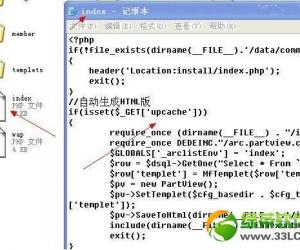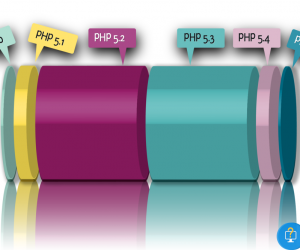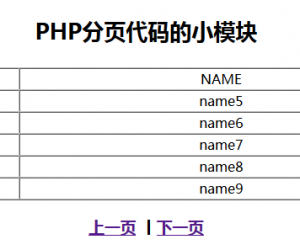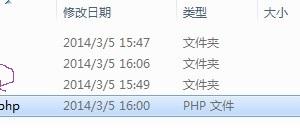PHP(3): Start using Smarty
发布时间:2015-05-27 19:30:14作者:知识屋
When we are doing web programming using PHP, one problem is that the php files can be mixed with php code as long as the html code. At some point, it is not very clean and also not safe. And the work can't be seperated for back-end programmers and front-end programmers. So we need a tool to seperate the php logic from the html code to well organize the and maintain the developing process.So here it comes Smarty.
Smarty is a web template system written in PHP. Smarty is primarily promoted as a tool for separation of concerns.[1] Smarty is intended to simplify compartmentalization, allowing the presentation of a web page to change separately from the back-end. Ideally, this eases the costs and efforts associated with software maintenance.
Smarty generates web content by the placement of special Smarty tagswithin a document. These tags are processed and substituted with other code. Tags are directives for Smarty that are enclosed by template delimiters. These directives can be variables, denoted by a dollar sign ($), functions, logical or loop statements. Smarty allows PHP programmers to define custom functions that can be accessed using Smarty tags.
2. Set up Smarty
Step1: download the Smarty and rename it's libs folder and import it into our php project.

Step2: create a php file to connect to Smarty( SmartyCon.php)
[php] view plaincopyprint?
<?php
/*
* Created on Jan 10, 2013
* Author: Nick
* Function: Connecting to Smarty
*/
include_once("smarty/Smarty.class.php");
$smarty = new Smarty(); //new an instance of smarty
$smarty->config_dir = "smarty/"; //smarty's config info
$smarty->caching = false; //use cache or not
$smarty->template_dir = "./templates"; //set the folder for keeping the templates
/**
* smarty can automatically compile the templates and php contents to an mixed file
* and be stored in templates_C folder
*/
$smarty->compile_dir = "./templates_c"; //the folder that store compiled files
$smarty->cache_dir = "./smarty_cache"; //store cache files
$smarty->left_delimiter = "{";
$smarty->right_delimiter = "}";
?>
According to the code we should also create 3 folders which are used to store some corresponding files. templates folder is used to store html files which as the folder's name shows: they are templates, and will be called by "$smarty->display()" to show different styles for a project. tempates_c is used to store the compiled files. php files and templates are written in different files, but the php compiler can compile the templates and php contents to an mixed file and store them into templates_c folder. smarty_cache is used to store cache files.

Step3: write the php content ( a.php)
[php] view plaincopyprint?
<?php
/*
* Created on Jan 10, 2013
* Author: Nick
* Function:
*/
include("SmartyCon.php");
$name = "php100";
//$smarty->assign("title",$name); //assign php variabel to the tab in templates
//$smarty->display("a.html"); //show the template
$nameTwo[] = array("name"=>"jimmy","city"=>"Montreal");
$nameTwo[] = array("name"=>"tim","city"=>"wuxi");
$nameTwo[] = array("name"=>"sam","city"=>"newyork");
$nameTwo[] = array("name"=>"john","city"=>"sanfran");
$nameTwo[] = array("name"=>"lily","city"=>"loyola");
$title= array("a"=>"name","b"=>"News","c"=>"date","d"=>"now()");
$smarty->assign("title",$nameTwo); //assign php variabel to the tab in templates
$smarty->assign("ab",$title);
$smarty->display("a.html"); //show the template
?>
As the code abouve shows, we can use $smarty->assign("ab",$title), we can assign a php variable to a smarty variable. Then we use $smarty->display() to display the corresponding template. In the template file we havce to use the same assigned file to display the value of the php content here. For example, if we want the template show $title's "News". In a.html file we have to use "{$ab[b]}"
Step 4: write template file( a.html)
[html] view plaincopyprint?
<html>
<h1>{$ab["b"]}</h1>
<hr>
<b>{$title}</b>
{section name=list loop=$title}
<b>
{$title[list].name} - {$title[list].city}
</b><br>
{/section}
</html>
The result is like this:

As to how to print out the values in a two dimentional table, we have to use {section name='' loop=$..}{/section}
(免责声明:文章内容如涉及作品内容、版权和其它问题,请及时与我们联系,我们将在第一时间删除内容,文章内容仅供参考)
相关知识
-
如何对PHP文件进行加密方法 PHP实现加密的几种方式介绍
-
php生成圆角图片的方法 电脑中php怎么生成圆角图片教程
-
用PHP构建一个留言本方法步骤 php怎么实现留言板功能
-
php中三元运算符用法 php中的三元运算符使用说明
-

php文件如何怎么打开方式介绍 php文件用什么打开方法
-
PHP怎么插入数据库方法步骤 php编程怎么导入数据库教程
-
如何安装PHPstorm并配置方法教程 phpstorm安装后要进行哪些配置
-
PHP 获取远程文件大小的3种解决方法 如何用PHP获取远程大文件的大小
-
20个实用PHP实例代码 php接口开发实例代码详细介绍
-
如何架设PHP服务器方法步骤 怎么搭建php服务器简单教程





















